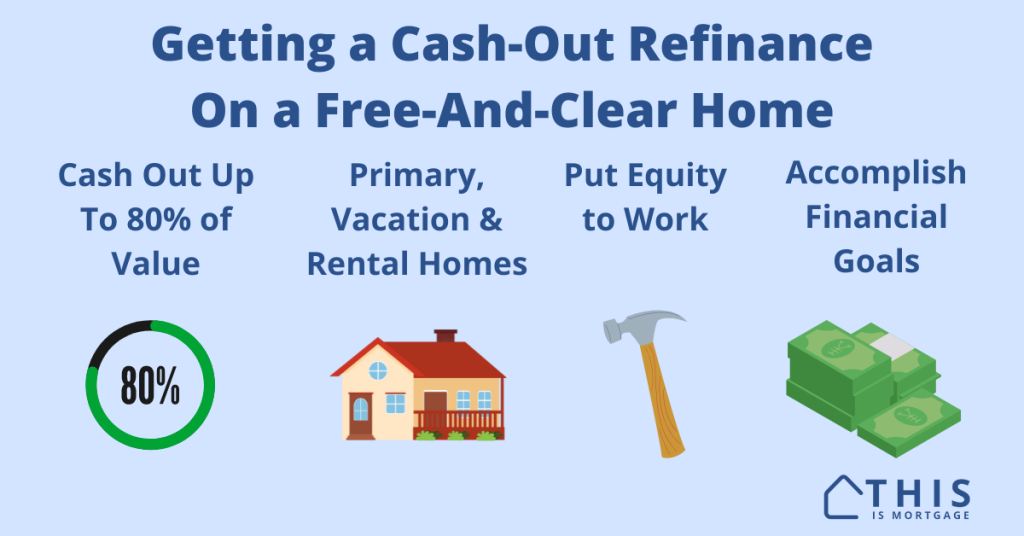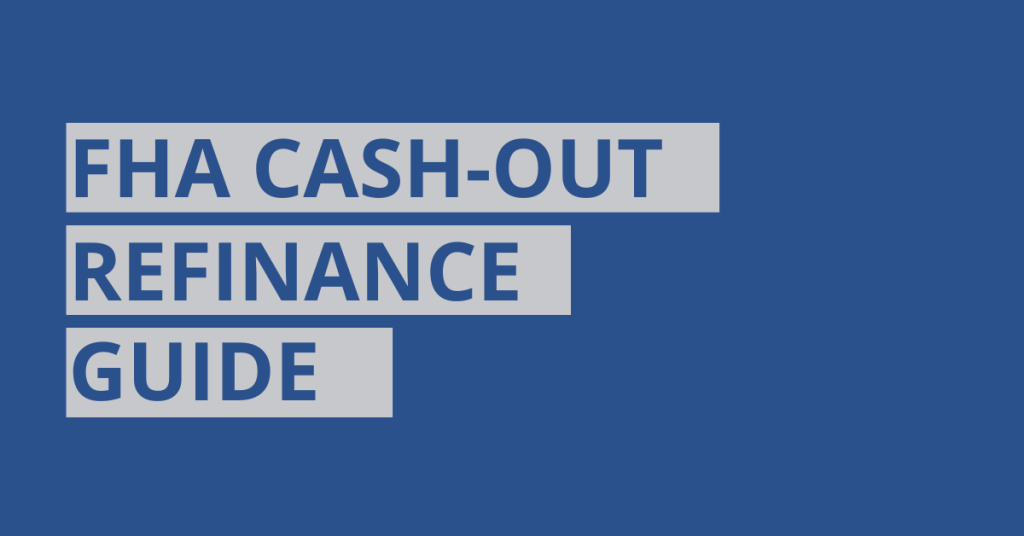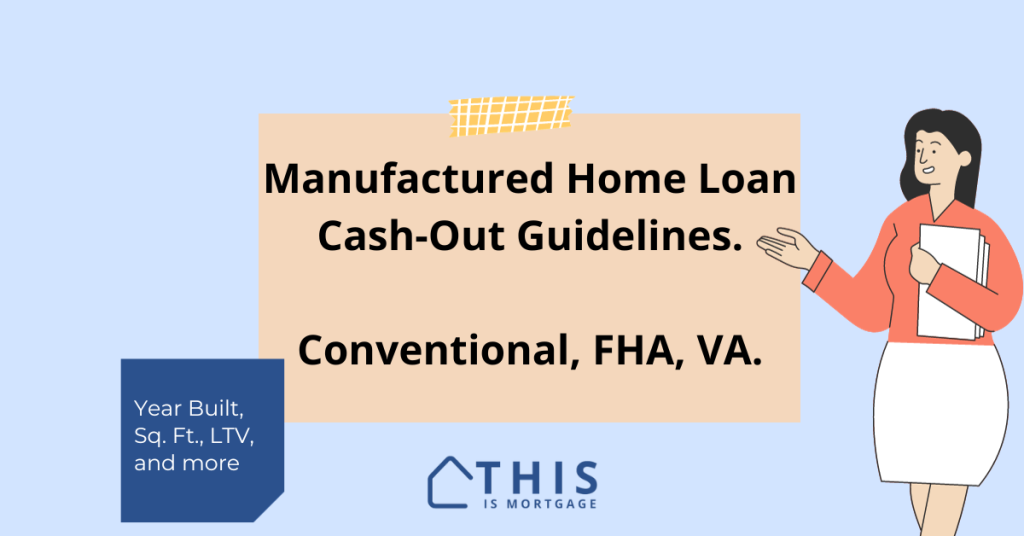As mortgage rates hopefully drop in 2024, owners of free-and-clear homes may consider putting their home equity to work with a cash-out refinance.
Mortgage rules allow homeowners to receive cash-out funds up to loan-to-value limits whether there’s an existing mortgage on the home or not.
Nearly 40% of properties in the U.S. have no mortgage at all, says the Census Bureau, up from about 34% in 2012.
These homeowners are presented an opportunity to buy more property, pay off high-interest debt, or build a retirement fund without selling a valuable asset.
Check today’s refinance rates.
Free-and-clear property maximum LTV
Conventional loan rule-makers Fannie Mae and Freddie Mac allow cash-out refinances on free-and-clear homes.
Government programs like FHA and VA offer cash-out loans as well. Most homeowners opt for conventional loans to avoid upfront and/or monthly funding fees and mortgage insurance premiums.
Following are maximum loan-to-value (LTV) ratios for conventional loans.
| Home use | 1 unit | 2-4 unit |
| Primary home | 80% | 75% |
| Second home | 75% | ineligible |
| Investment property | 75% | 70% |
For example, you could take out a $225,000 cash-out refinance on an investment property worth $300,000 (75%).
You would end up with around $215,000 to $220,000 cash at closing after paying closing costs and setting up an escrow account for taxes and insurance.
You don’t have to take out the maximum, but it’s available if you qualify.
See if you qualify to cash out your free-and-clear property.
Is it worth taking on a mortgage payment?
While having zero mortgage payment is nice, there could be goals that are worth the new expense.
For example, your long-time goal is building a real estate portfolio of quality rentals to support your retirement. Having $200,000 in tappable equity in a free-and-clear home could help you put $65,000 down on three rental properties.
As the tenants pay down the mortgages, you end up with semi-passive cash flow – something that may not have happened without tapping equity.
Other goals are worthwhile, too. Consolidating credit card debt, business loans, auto loans, and other debt could pencil out in your favor.
Waiting periods
You must be on title for six months before taking out cash with a refinance. However, if you recently purchased the home with all cash, you may be eligible immediately with the Delayed Financing rule.
This rule says you can reimburse yourself up to standard cash-out LTVs immediately after a cash purchase. Just supply the lender with a final settlement statement showing no financing was used.
Qualifying for the cash-out refinance
Typically, you have to have good-to-excellent credit to get the best rates, but some applicants may qualify with lower credit scores.
Those with very low credit should consider an FHA cash-out refinance, which allows scores down to 580.
But the bigger issue for many will be the debt-to-income (DTI) ratio. All your existing debt payments plus the new house payment must be below 45% of your gross income. Make sure your current expenses are low enough to meet DTI guidelines including the new payment.
Check your eligibility for a cash-out refinance.
Cash-out refinance rates
Cash-out refinance rates are higher than for purchase loans.
Some strategies to get the best rates are:
- Keep your loan-to-value under 70%
- Have a credit score above 740
- Owner-occupied single-family homes are the cheapest to finance; condos, multifamily homes, second homes and investment properties require much higher rates
- Loans under $766,550 receive the best rates
You can still be approved if you don’t meet the above criteria. Your rate will be higher. Get quotes from a few lenders to make sure you’re getting the best deal.
Preparing for the new payment
Suddenly having a mortgage payment on a home that’s been paid off for years can be a shock.
It could be a good idea to make an approximate payment to a savings account for a few months before closing on the new loan.
This will ensure you can handle the payment. Plus, you’ll have a nice reserve fund built in case of an emergency.
Should you get a HELOC instead?
Home equity lines of credit (HELOCs) are a good tool to tap home equity as well.
They are more flexible in that you can borrow and pay back the balance as needed. And they come with lower upfront costs.
However, they require variable rates, which could rise in the future. Some banks and credit unions offer home equity loans with fixed rates, although rates are higher than for cash-out refinances.
HELOCs or home equity loans are best if you need less than about $100,000. Typically, it’s not worth paying closing costs on a full cash-out refinance for amounts lower than this.
But those who need $150,000, $200,000, or more could be better off with a fixed-rate cash-out refi since the rate can’t rise.
Should you consider cashing out your paid-off property?
Paying off a mortgage is something to be proud of. But sometimes a paid-off property isn’t “pulling its weight” so to speak.
Many homeowners find it’s better to put equity to work. Years later, they are glad they did.




